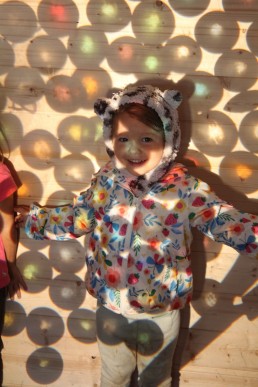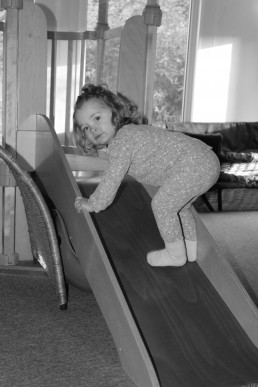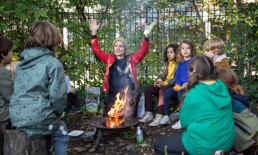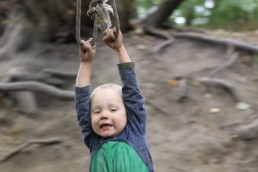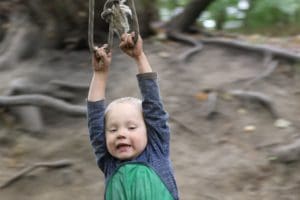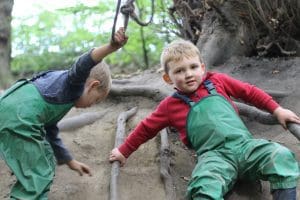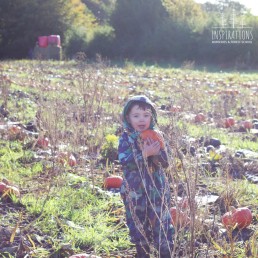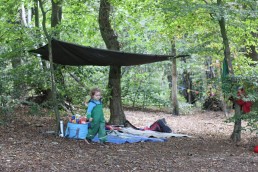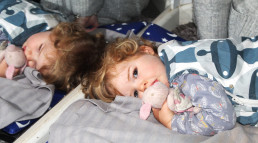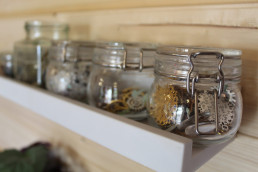2021 Wrapped
The year in review
Our children at Inspirations continue to lead their own learning and inspire us each day as we view the world through their eyes. Whilst Covid-19 still lingers over us for another December let's remind our selves of the many languages of learning our children have embarked on this year.
100 Languages in 12 Months- One photo for each month
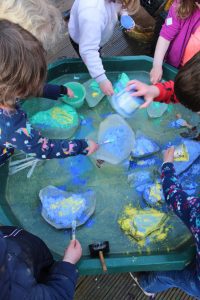 January
January
After a Tier 4 Christmas 2020 our children came back in January eager to see their friends and explore. Nursery remained open throughout the January lock down and outdoor learning was as always, a priority. We jumped straight back into the year with a chill as the children explored the natural ice with power paint pipettes and brushes.
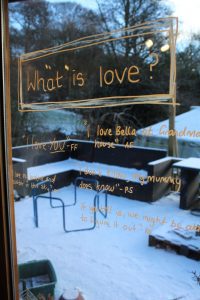 February
February
What is love? Snow stayed with us to Valentines Day as we focused on what love means, how it feels and what it looks like. At Nursery we focused on the beauty of learning from mistakes, and how our children seek meaning in everything they do. Check out our blog from February this year. https://inspirationsnurseries.co.uk/news/the-art-studio/
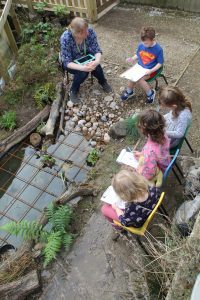
March
March saw our new pond thriving- A new project to invite natural wildlife into our setting and support the natural eco-system.
This also provided a wonderful learning opportunity as the children watched the life cycle of a frog unfold in front of them.
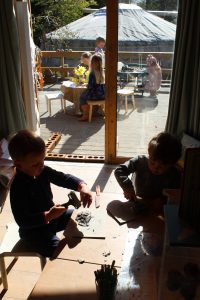
April
Sun spills into the art studio and the newly developed decking as their interest in flowers and growth develops. The toddlers embraced their forest school garden and there was a focus on raising confident learners.
Our Pre-schoolers took to the streets to litter pick, making Horsforth a cleaner place.
- https://youtu.be/5N-yULXVwjk
May
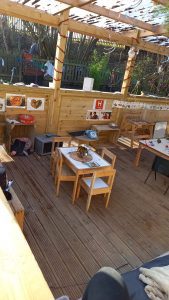 More developments happened in the Spring, a new outdoor classroom was built in the toddler room with shelter from the rain. The Art Studio decking was also upgraded with a rain cover, insulation and under floor heating.
More developments happened in the Spring, a new outdoor classroom was built in the toddler room with shelter from the rain. The Art Studio decking was also upgraded with a rain cover, insulation and under floor heating.
Forest School spent longer hours in the woods making the most of the seasonal changes- check out our blog from one of our sessions -https://inspirationsnurseries.co.uk/news/spring-time-in-the-forest/
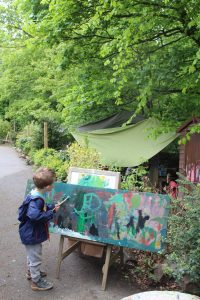 June
June
Whilst the Art Studio developments took place the buggy shed became a new pop up Art Studio. We also invited pre-school parents in for an open day parents evening where they experienced Forest School and the Art Studio and learnt about the Reggio Approach to learning.
July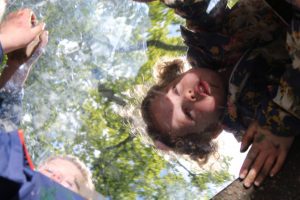
In July we took the art studio sessions into the woods along with some mirrors to give some new perspective. The walk of art gave the children chance to showcase our forest school song -
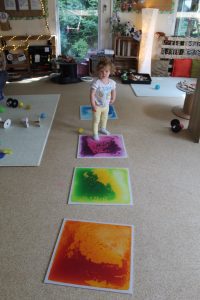
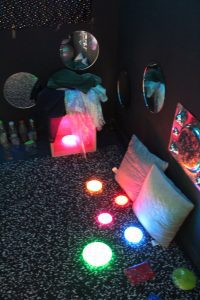 August
August
The were some more changes within nursery as Tara stepped into her new training role, Sophie became Hedgehog Baby room leader and Becki became Butterflies Baby room leader. All three are flourishing in their new roles.
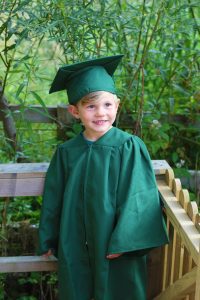 September
September
End of an era for some of our children as we said goodbye to our school leavers as they embark on their next adventure. This also meant a few transition for some of our toddlers moving up to our outdoor pre-school setting.
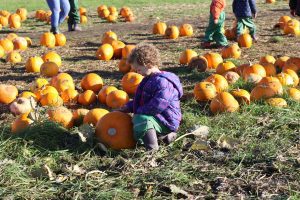 October
October
Time to light the wood burning stove again and to the pumpkin patch we went to bring an array of pumpkins back to nursery.
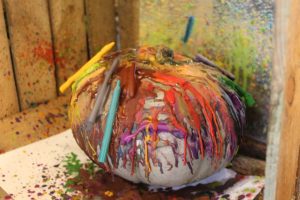 November
November
In November we celebrated Diwali and Bonfire night throughout all of our rooms. This was an exciting month for pre-school as Forest School Rachel stepped into the role of Pre-School Room leader.
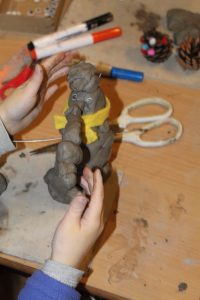 December
December
The month we all came together for our Christmas party. And here we are again, a whole year later, and have you seen a cuter snowman? The children crafted this snowman last week using clay, wire and felt for the scarf.
This year we have seen some big developments to our onsite forest school, our new outdoor classrooms and the pond. We continue to have our amazing group of committed staff and we are excited to welcome more in the New Year as our nursery growth continues. But the biggest developments we have seen this year is in the children. There is no limit to their capabilities, curiosity and positivity through what has once again been a challenging but rewarding year.
Here's our festive video from last year. So with just one week to go, Merry Christmas and Happy New Year from us all at Inspirations Nurseries and Forest School.
https://youtu.be/y_6UFaNqbx0
2021 in the Art Studio
Looking back over another year in the Art Studio reminds me how every year of learning is completely different to the previous one, and that's the beauty of a child led setting.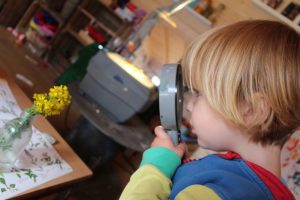
The Art Studio is Reggio Emilia inspired space for the 3 and 4 year olds. They come in smaller groups to extend any areas of learning interests through all kinds of expressive arts. It is a purpose built wooden structure set behind the yurt where the children's voice forms the basis for each following weeks planning and activities. Because of this there is no way of knowing what subjects will be explored and what questions shall be raised by the children. But one thing i do know is; the combination of their imagination and curiosity, and the art studio's extensive creative supplies of art, music and visuals makes for a thousand possibilities.
Here's just some of what we got up to this year-
The year started with an interest in creating structures. I noticed the children using clay, magnets and loose parts to build spaces. This lead onto an interest in castles and 3D shapes which lead the children to compare materials.
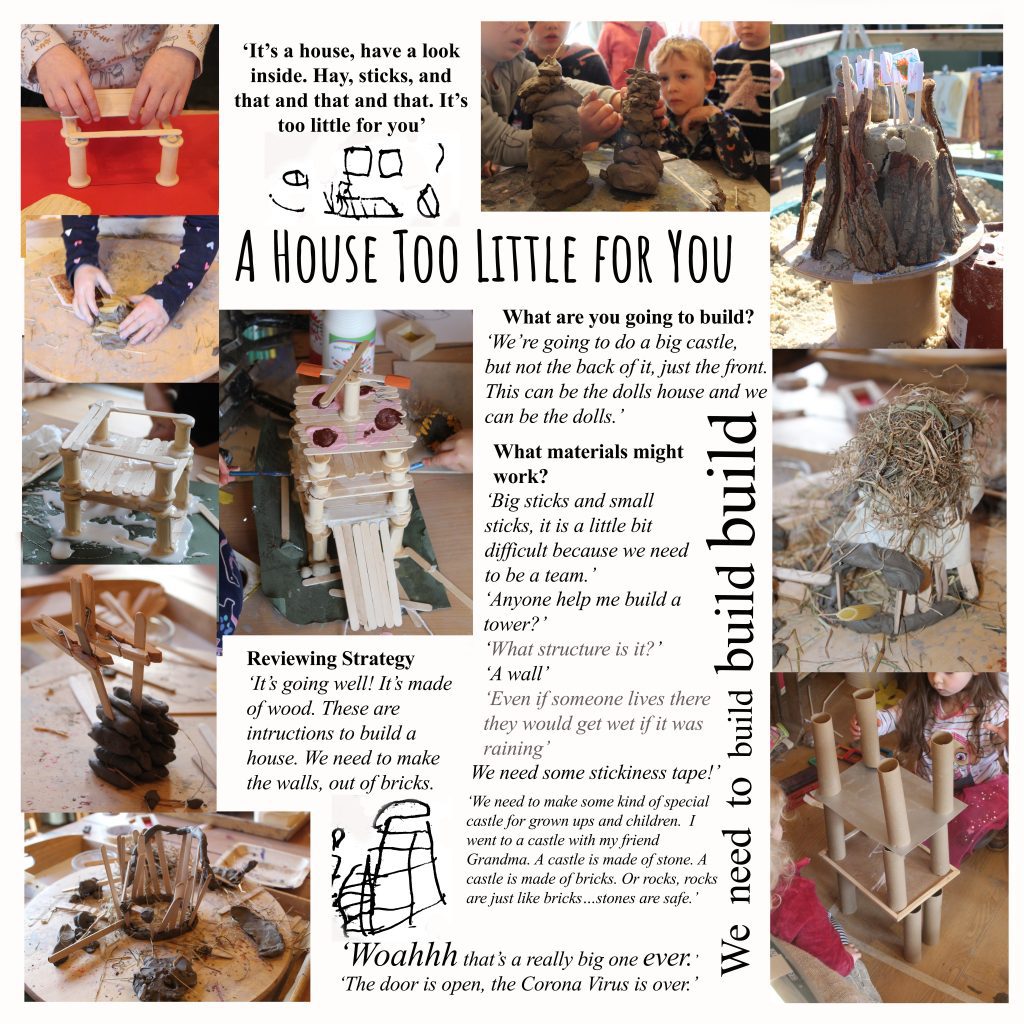
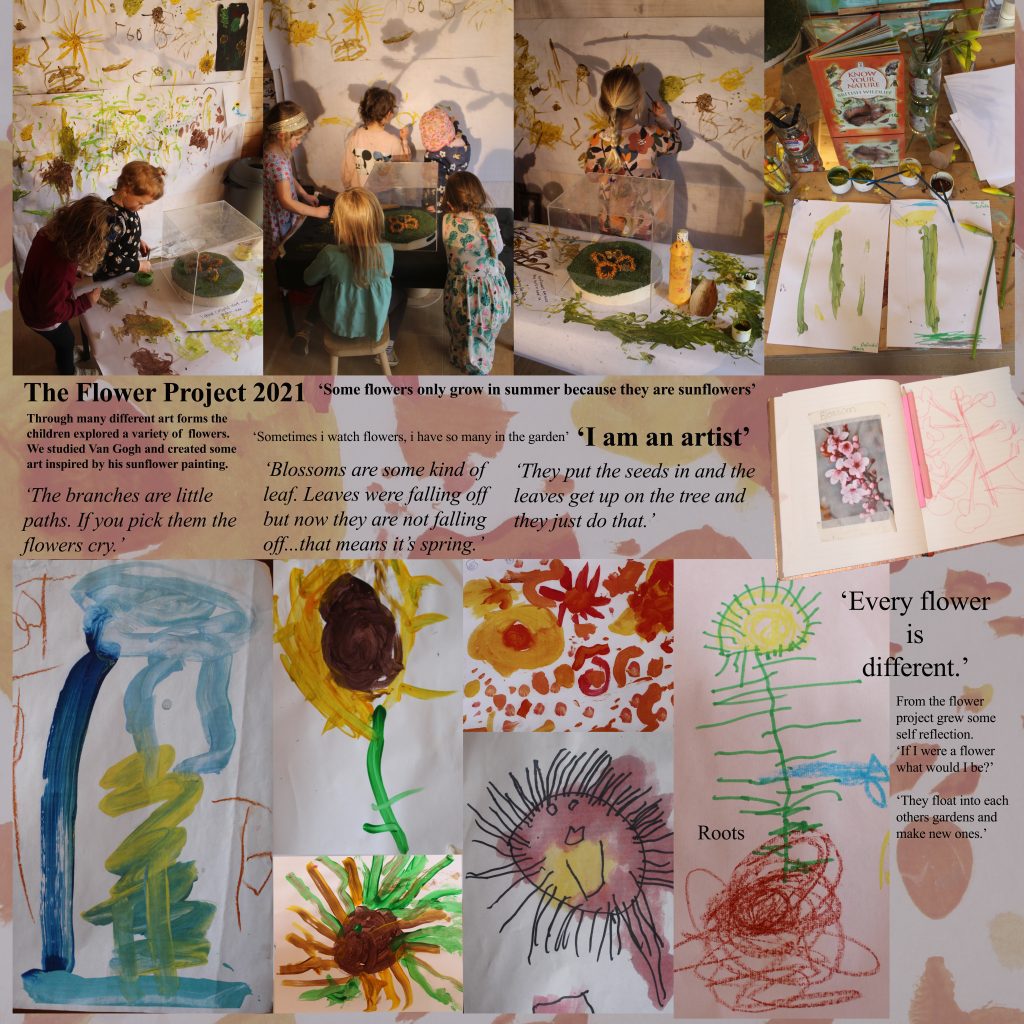
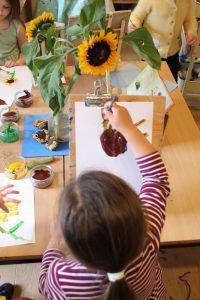
As early spring set in the children noticed changes to our trees and the first sign of growth. This was to lead onto a 7 month project exploring plants, flowers and trees, but also lead us to look at different artists and styles of painting. Van Gogh's sunflowers inspired us to try new ways of painting, as we studied Blossom, Sunflowers and Dandelions.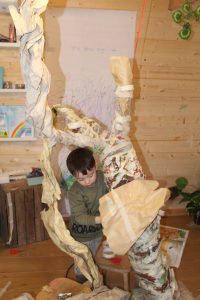
'The branches are little paths'
The growth interest lasted the entire Spring and Summer, we dissected plants and vegetables as the children experimented with their own ideas of the hypothesis of the journey from seed to plant. In the Autumn as the trees started changing they became a topic of interest which lead to a tree structure being built from floor to ceiling.
Throughout all of these group interests, individual interests are happening simultaneously and woven throughout each art session. Here's just a snippet of this years creativity-
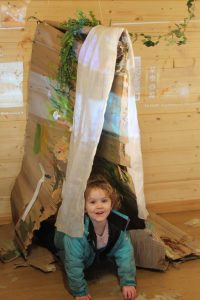
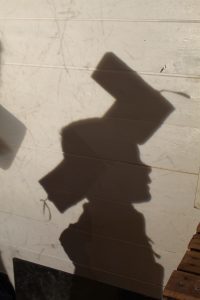
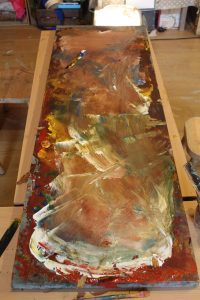
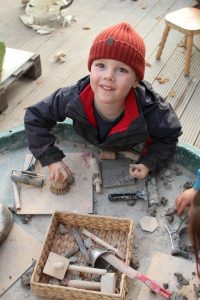
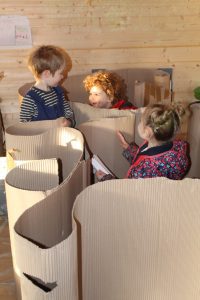
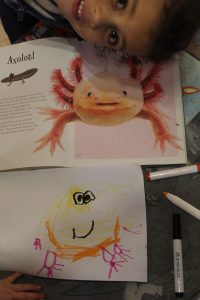
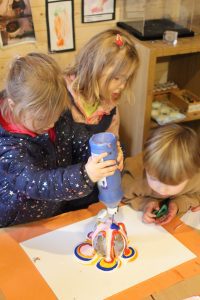
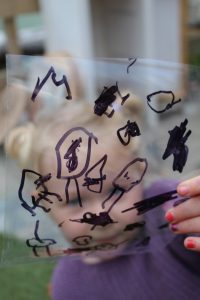
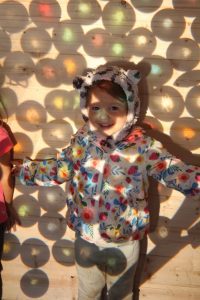
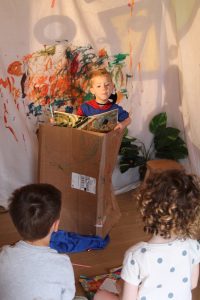
Don't forget to check out our Art Studio video on Youtube-
-Nathalie
https://youtu.be/4-59qb9GgdQ
Measured Risks- Part 2
In our previous blog 'Risky Play' https://inspirationsnurseries.co.uk/risky-play/ -we defined the importance of risky play with the pre-school age group, but how can we incorporate measured risks within our youngest rooms?
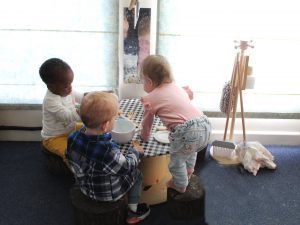
Physical Risks and Emotional Risks
At Inspirations Nurseries and Forest School we are committed to outdoor play adventurous and creative play. Taking risks isn't a negative; it is about learning to safely manage tasks. Risky play can often be physical, but also includes taking emotional risks such as conquering fears and meeting new friends, and mental challenges such as learning a new routine or overcoming a fear.
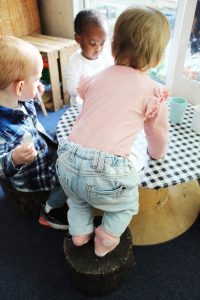 We work with our parents to find out each child's ability and how they are challenged. During home visits and settling in sessions we get to know the families and can usually determine whether the parents take measured risks themselves. At nursery, the educators will be aware of children's limits and which children need more support than others. Babies begin to take risks as soon as they begin exploring the world and their environment through crawling, rolling, walking, running and balancing.
We work with our parents to find out each child's ability and how they are challenged. During home visits and settling in sessions we get to know the families and can usually determine whether the parents take measured risks themselves. At nursery, the educators will be aware of children's limits and which children need more support than others. Babies begin to take risks as soon as they begin exploring the world and their environment through crawling, rolling, walking, running and balancing.
There are a few examples within the baby room where we have adapted our expectations to support children in their needs to explore. We noticed the babies climbing up the slide, instead of limiting this need to explore we supported them, removed their potentially hazardous socks and enabled them to learn their own limitation and boundaries.
Another example is from a few years ago involving our very low babies table. The rule was simply 'no climbing on the platform' but this need for them to explore was constant and persistent. And so, with support we allowed them to climb. Interestingly after this rule changed they stopped trying to climb on it due to the fact we enabled them to take their measured risk safely and they mastered that new skill.
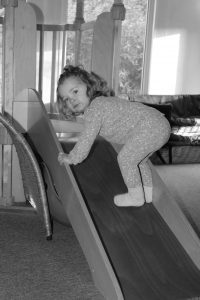
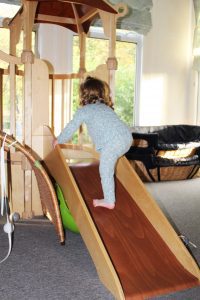
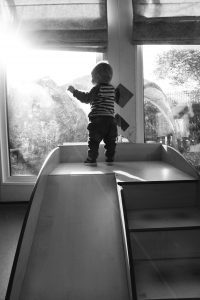
Supporting Adventurous Play
By allowing measures risks we are making our children more aware of their surroundings and abilities. Our aim is to let them find their limitations themselves instead of preventing learning opportunities. We often hear the words 'be careful' thrown around, but by simply changing our language we can help our children achieve their goals more safely. Here's some ways we can use language to encourage our toddlers and children with new tasks-
- 'Stay focused on what you’re doing.'
- 'Take your time'
- 'Find more space/do you need more space'
- 'Do you feel stable/balanced/safe'
- 'I’m here if you need me.'
- 'What could you do differently?'
The space and freedom that comes with our outdoor setting allows children to hone in on their motor skills, build their muscles and indulge in their natural curiosity. In our toddler room garden we have created a separate area incorporating some trees for climbing, slopes and ropes with uneven surfaces. This is heavily supervised but allows the children to take more risks in a safe environment. It strengthens their resilience and prepares them for even more opportunities when they are able to go in the woods for forest school sessions when they turn 3. With support and the right environment there is no limit to the tasks they can accomplish.
'The more risks you allow children to take, the better they learn to take care of them selves'
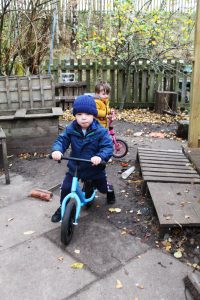 - Kayleigh
- Kayleigh
Forest School in the News
It's becoming more common to find Forest School articles making the news and for all the right reasons. Out of the turmoil of lock down came some good news stories, and here is one that we wanted to share with you.
Lockdowns were “a chance to get off the treadmill” for families, says Lewis Ames, co-director of Devon-based forest school Children of the Forest. They’ve seen a rise in applications since the start of the pandemic, with about 150 families on their toddler-group waiting list, and 50-60 children on the waiting list for their forest school for home-educated children.
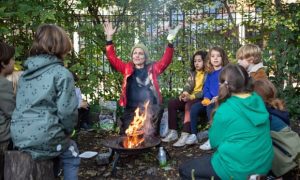
Risky Play
Why do we advocate risky play at Inspirations?
‘Encouraging children to enjoy challenges rather than to shy away from them, could also increase their persistence and learning abilities.’ - (Dweck 2000)
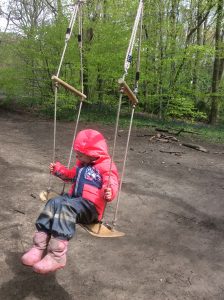 We are reading more and more to support this view in the paper and in the news. Children are becoming so mollycoddled and protected that certain traits like independence, resilience, creativity and confidence are being eroded away. It is this erosion of critical life skills that has driven Inspirations move towards our Reggio Emilio inspired approach to learning and our Forest School ethos. Both pedagogies allow for environments rich in learning opportunities including those gained from taking risks and learning to manage those risks.
We are reading more and more to support this view in the paper and in the news. Children are becoming so mollycoddled and protected that certain traits like independence, resilience, creativity and confidence are being eroded away. It is this erosion of critical life skills that has driven Inspirations move towards our Reggio Emilio inspired approach to learning and our Forest School ethos. Both pedagogies allow for environments rich in learning opportunities including those gained from taking risks and learning to manage those risks.
So, what is risky play?
Risky play is how we allow, encourage even, our children to explore, examine and play within areas, or with equipment, which could be determined as carrying a measured level of risk. Examples of risky play within our Nursery environment would show themselves particularly within our Forest school ethos where children are encouraged to climb, slip and slide in mud, traverse small streams, swing on rope swings and use tools such as hammers and potato peelers for whittling wood.
Of course, measured risk is not limited to our Forest School children, our babies and toddlers have balance beams to traverse, uneven ground to manoeuvre through and even nettles which are purposefully left within our garden as part of our measured risky play policy.
How does risky play help build more resilient, independent confident children?
Taking measured risk gives children the opportunity to fail, learn and adapt processes. It naturally encourages children to be determined and resilient to failure, which in turn shows them the flip-side of failure: success!
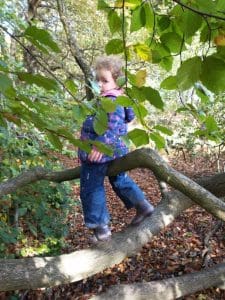

It is a beautiful thing to observe children helping their friends, problem solving together, building up their teamwork and communicative skills and showing such compassion, support and encouragement to one another during particularly challenging moments. The beauty is, that each child understands that they may be the supportive one on this occasion, next time though it could be them needing the support of their peers!
Obviously failing can be a stressful, uncomfortable feeling, one which as adults we can fully understand. But it is important that our children are able to manage their stress and know that they have the skills and understanding to overcome it. It's important that they realise it is a temporary state of mind that, once managed and overcome can in fact lead to great success.
Here at Inspirations children can traverse manageable challenges and are able to experience small levels of temporary fear and stress finding they have ways of overcoming it. This leads to adults who have a balanced view and approach to risk.
Risky play should not be…
..Dangerous! You may have noticed throughout this blog I have consistently used the word measured. This word is paramount when talking about any risk but particularly so when working alongside children. At Inspirations our risk assessments are carried out on a daily basis whether they be in written form or within our day-to-day observations of children’s play and interactions with each other.
We are constantly assessing the levels of risk and putting in place management strategies for those risks. This may be as simple as ‘it’s too windy to go into the woods today as hanging dead wood may fall off trees’ to 'that piece of equipment is looking worn and needs fixing or replacing'. At all times you can rest assured our team of highly qualified educators are adept and assessing and keeping our children safe whilst at the same time offering all the joys and learning opportunities of MEASURED risky play! Win, win…
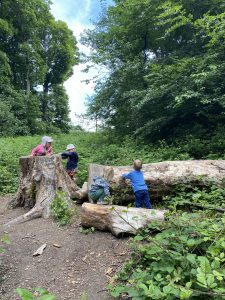
Pumpkin Picking
It's that's time of year again...
The time that nature hands us natural learning supplies by the plenty. Conkers, acorns and fallen leaves are brought into our learning environment to inspire creativity, discussions, and all kinds of learning through play.
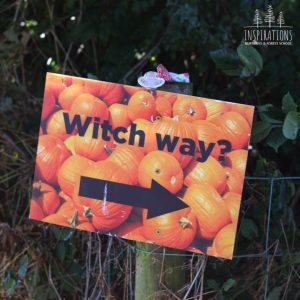
In the Art Studio, the children are inspired by Leaf Man, making their own leaf people and arrangements on the Lightbox. But there is one thing missing: pumpkins!
Every year we take our pre-school children to Kemps Farm- Horsforth Pick your own. In spring they open up for strawberry and fruit picking. In Autumn they provide thousands of pumpkins all shapes sizes and colours. How lucky we are that this is on our door step.
So on this crisp cold but sunny Thursday morning in October we counted heads, suited up and set out for our Autumn adventure.
A Beautiful Day
When we arrived it was a little different to last year, much to their delight, this time we had a tractor ride to the field. Just 5 minutes from nursery and we somehow felt like we were in the middle of the countryside. Next year the tractor driver said he might even drive us right back to nursery.
As we meandered around the one way dirt tracks through the fields of orange the children selected the pumpkins to bring back. Orange, white, green, bumpy, they selected a total variety. The terrain added to the adventure, climbing over the winding stalks and wading through the mud was a naturally formed assault course. We definitely recommend wellies!
Wheel barrows full and imaginations captured we began our walk back to Inspirations. We arrived back to our yurt in time for our Spaghetti Bolognese and we look forward to showing you what we do with our chosen pumpkins next week. Watch this space.
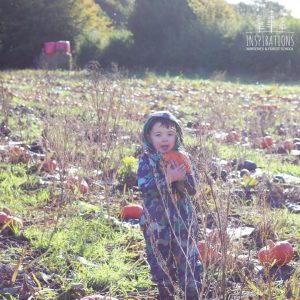
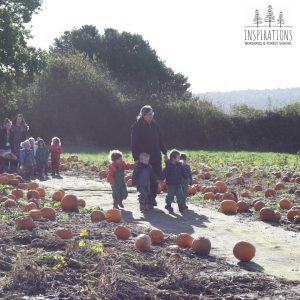
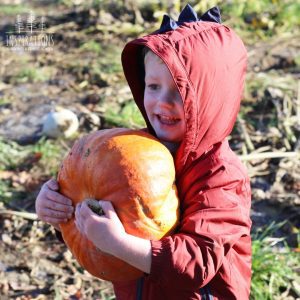
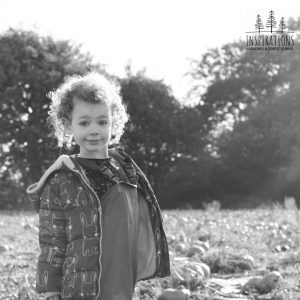
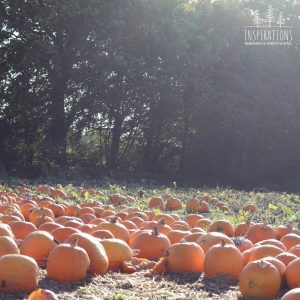
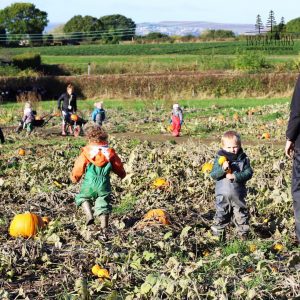
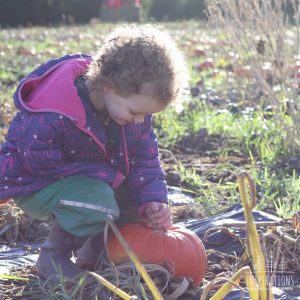
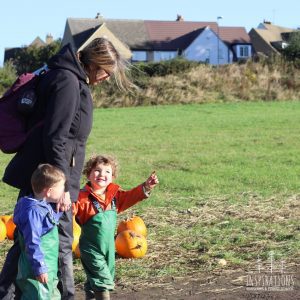
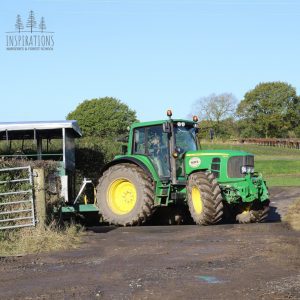
Happy Halloween!
-Nathalie
Autumn Equinox
As the yellow takes over the green of the leaves, the Pre-School children get ready for a full day in the woods to celebrate the end of summer. We take a bag of sandwiches, oatcakes, veggie sticks, plenty of fruit and some hot chocolate.
During the autumnal equinox, the sun shines directly on the equator, and the northern and southern hemispheres get the same amount of rays. The alignment officially occurs at 2:21 p.m. Wednesday, around the exact time we were laying on our backs looking up at the trees.
We were there to celebrate change, to appreciate the natural surroundings, the end of summer, and freedom and time to learn from our woods. I brought my camera along to capture some of the children at play-
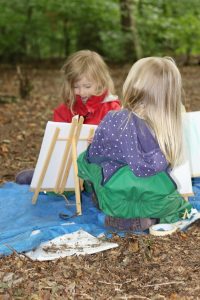
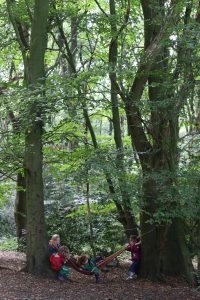
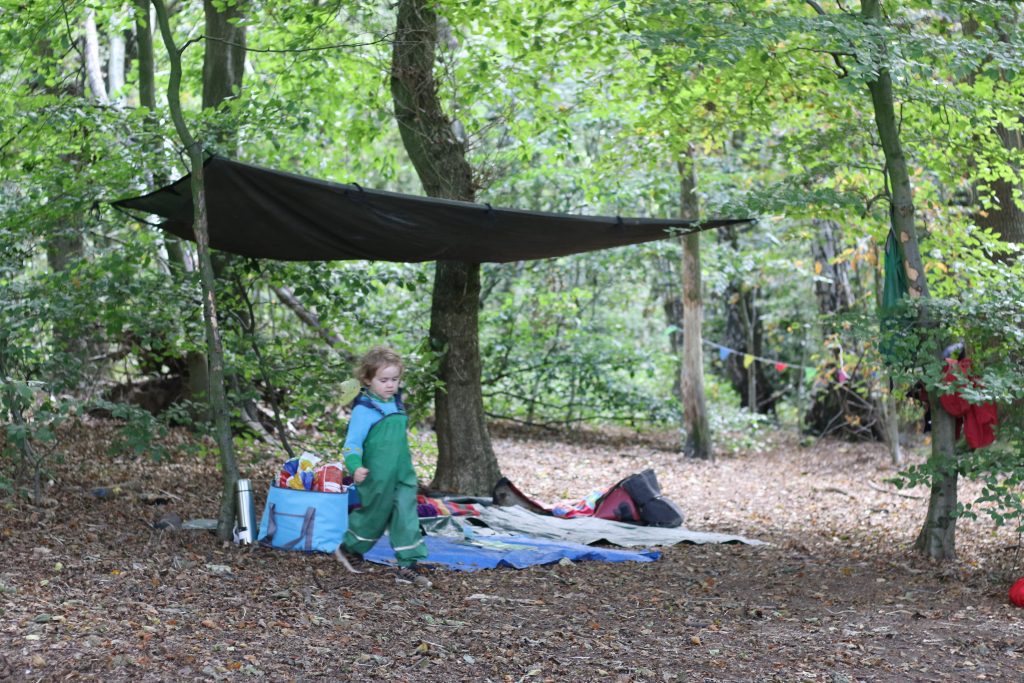
Settling into our Baby Rooms
In today's blog we take a look at the settling in process and key person allocations across our two baby rooms- The Hedgehog Room and The Butterfly room. There are many benefits to your child starting a childcare setting, it's a chance for them to develop additional social skills, learn new skills and gain independence away from their main carers. For this reason we ensure we create close bonds between our staff and your family, particularly between your child and their key person. But what is a key person?
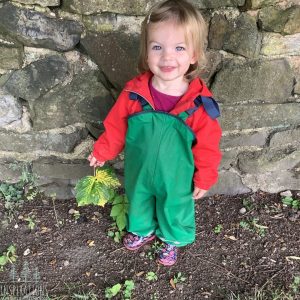 The importance of relationships
The importance of relationships
'Key person' is a term used a lot in nurseries and it a vital part of our nurturing setting at inspirations. The statutory frameworks (2017) states;
“Each child must be assigned a key person. Providers must inform parents and/or carers of the name of the key person, and explain their role, when a child starts attending a setting. Children thrive from being a part of loving and secure relationships. Children learn best when they are healthy, safe and secure, when their individual needs are met, and when they have positive relationships with the adults caring for them”.
Prior to starting Inspirations, we offer a home visit, a chance for your key person to visit a few weeks before your child's start date. This is an opportunity to tell us all about your child but also a chance for you to ask questions. This will be followed by a series of settling in visits at our setting as follows-
- 1 hour with parent or carer
- 1 hour on their own
- Longer visit including Lunch or sleep
- Last visit including lunch and sleep
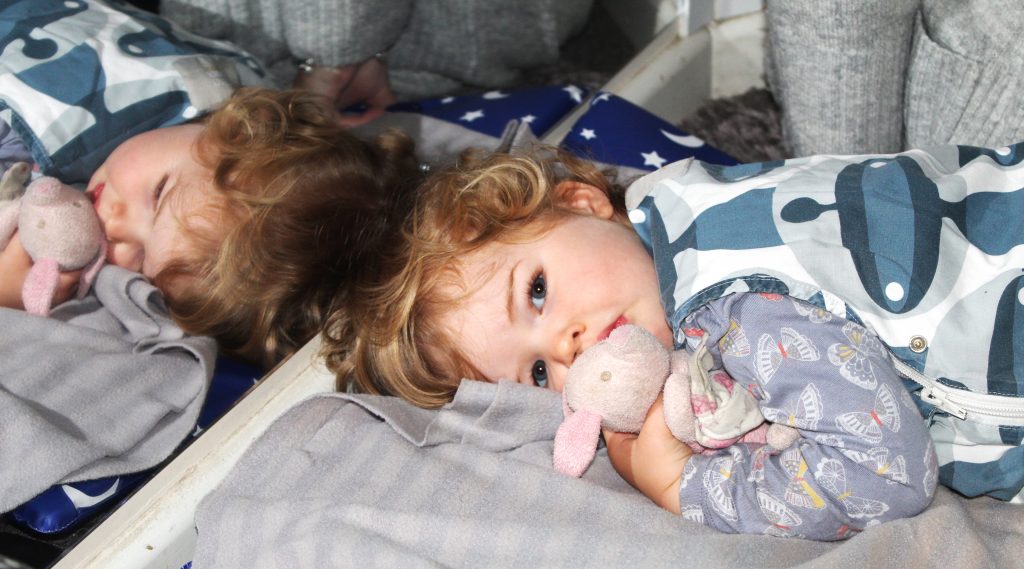
During the first session, the key person will spend time with the child and the parent; a general 'getting to know you' session. We will ask you to complete a ‘starting points’ sheet to show us what your child is currently doing and how we can meet their needs. We will also discuss sleep patterns, eating and conversations about your families and any festivals celebrated, religions or dietary requirements. By following your child’s individual routine will help them feel safe and secure, and create a home away from home. 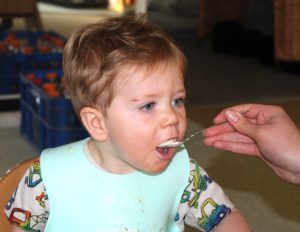 We are proud of our strong partnerships with parents and ensure we welcome you and your family into our Nursery and Forest School community.
We are proud of our strong partnerships with parents and ensure we welcome you and your family into our Nursery and Forest School community.
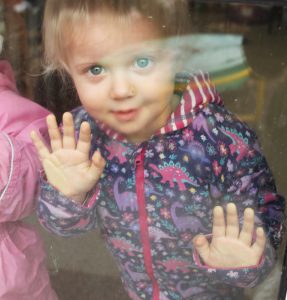 Positive relationships is one of the overarching principles of the EYFS. It’s important to form positive relationships with the children and role model the importance of 'making relationships' with others too.
Positive relationships is one of the overarching principles of the EYFS. It’s important to form positive relationships with the children and role model the importance of 'making relationships' with others too.
The Importance of Attachment
The attachment theory originates from the work of John Bowlby (1958). He wanted to look more in depth at the importance of the child’s relationship with their mother in terms of their social, emotional and cognitive development. He formulated his theory surrounding a link between early infant separation with the mother and later mental health problems. Bowlby proposed that attachment with a caregiver provides safety and security for an infant. Within his theory, it is suggested that between 0-5 years old is a critical period of time to form attachments with care givers and forms a secure base for children when exploring the world. Attachments are emotional bonds that children develop with parents and other carers such as their key person at nursery. It is thought that children who have secure attachments cry less when separated, they engage in more pretend play and have a strong sense of who they are. The settling in visits we offer are to support the attachment theory and help the children start to form those attachments with their key person and even the other adults and children in the room.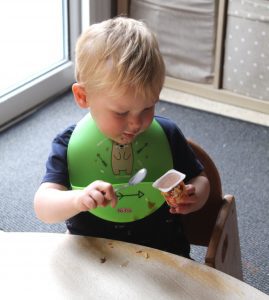
The home visit and the first visit with the parent is vital to show the children that the parent trusts this new person in their life and they can role model a positive relationship through talking about your children.
If you have any other questions about our baby room settings please don't hesitate to get in 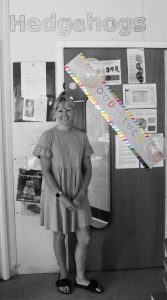 touch at 0113 2585800 then follow the extension to either the Office, The Butterflies or The Hedgehogs.
touch at 0113 2585800 then follow the extension to either the Office, The Butterflies or The Hedgehogs.
This week we are excited to announce Sophie will be our new Room Leader of The Hedgehogs room, as Tara moves on to her new role as Training Manager after 17 years of running the Baby Room. We wish them both well in their exciting new roles within our Nursery.
Our Baby Rooms
Where it all begins...
For most of our parents, this will be the first time away from their little ones. It is our aim across both of our baby rooms to ensure this experience is as smooth as possible.
 Our cosy, creative and nurturing baby rooms, The Hedgehog Room and The Butterflies room will work closely with parents or carers to welcome them into our community and to adapt to home schedules, easing them in with sessions.
Our cosy, creative and nurturing baby rooms, The Hedgehog Room and The Butterflies room will work closely with parents or carers to welcome them into our community and to adapt to home schedules, easing them in with sessions.
Our Reggio Emilia ethos is evident through out our whole nursery, and just like the other rooms our babies are indeed the centre of their own learning. When creating our baby room’s our aim was to create a nurturing adaptable environment to support their growth and learning and each stage of development.
The space, the resources and the staff are all there to create a home away from home, a fun, creative, musical space to stimulate them as they navigate through their first year.
Loose parts display them selves a little differently here, we have safe larger loose parts such as wheels, tubes, large pine cones, cable reels. The room layout and resources change from week to week to mirror the children’s interests.
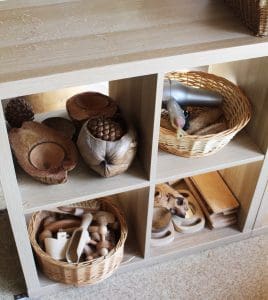 We will go into the key person and settling in process in more detail in our next blog, but for now, let us introduce you to our two baby rooms.
We will go into the key person and settling in process in more detail in our next blog, but for now, let us introduce you to our two baby rooms.
The Hedgehog Room
Lead by Tara, with Sophie as deputy, the Hedgehog room is sectioned into 2 parts. Part one has a large floor space where materials and art supplies are brought in daily for messy play and creativity. From hand painting, to gloop, to sand, ice, bubbles, cardboard boxes, no two days are the same when it comes to the resources in this area.
There is a loose part area, a small world area, pots and pans, puppets and a large round table for meal times accompanied by high chairs.
Part two is a carpeted movement area with mirrors, projectors, cushions and a large climbing frame, bridge and slide, where the children sleep.
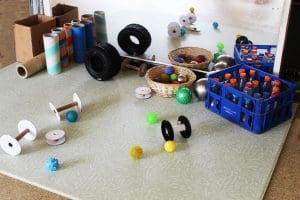


The Butterflies Room
Lead by Becki, our second baby room is joined to the Hedgehogs Room via the shared nappy room that has recently been painted with an under the sea theme by our Atelierista. Like The Hedgehogs room, The Butterflies room as the area for creativity and a carpet area for movement and play, as well as constantly changing natural resources. There is also a darkened sensory room filled with lights and glowing artefacts.
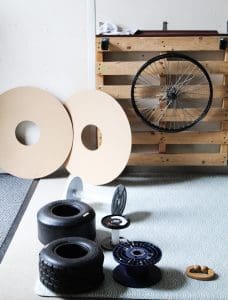


Outdoor play is of equal importance to indoor play and the Baby rooms are no exception. Our outdoor spaces are an extension of their rooms, with opportunities to explore a mud kitchen, bikes and beds of lavender for additional sensory play. By having a big emphasis on outdoor play we help prepare the children for forest school and outdoor learning as they move up to the next rooms. This week the baby room went on a trip to the forest, where they noticed a new interest in mark making in the mud with sticks.

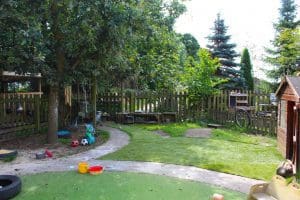
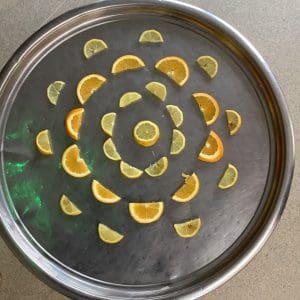
With a focus on nurturing your baby through those first months, our focus is on settling you and your baby, ensuring that you are both happy and well cared for. Close relationships are formed making the transition from home to nursery smooth with you feeling supported and your baby comforted and loved.
If you want to know more about our baby rooms or are interested in enrolling please get in touch https://inspirationsnurseries.co.uk/contact-us/
-Nathalie
Ambiguous Resources 2
Have you ever made a car or a rocket from a cardboard box? We most definitely have. A saying we hear a lot is “they play with the box, more than the toys inside”. At Inspirations, we have also witnessed this, and observed that children gain a lot of skills from this type of play.
 The children ‘making something out of nothing’ is teaching them to be resourceful and using their imaginations. I always remember the fairy liquid advert, the little boy waited weeks and weeks for the empty bottle so he could create a rocket with it. It doesn’t stop at just creating artwork. You can reuse many things to make for other uses which we will talk about a little later in this blog.
The children ‘making something out of nothing’ is teaching them to be resourceful and using their imaginations. I always remember the fairy liquid advert, the little boy waited weeks and weeks for the empty bottle so he could create a rocket with it. It doesn’t stop at just creating artwork. You can reuse many things to make for other uses which we will talk about a little later in this blog.
At Inspirations, we use loose parts (see our previous loose parts blog). The purpose of them, is that they are so versatile and allow the children to make whatever they wish.
A plastic car is only a plastic car, whereas a stick could be a magic wand or a person or wherever your imagination will take you. It is the same when reusing resources to make something else with the added bonus that we are recycling an item, instead of throwing it away.
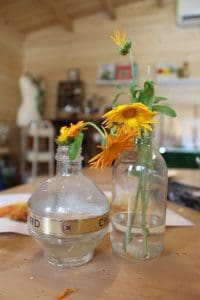
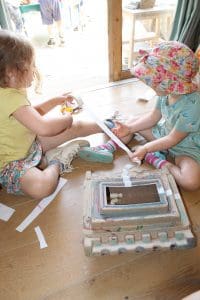 We like to do this with a lot of items, including household items. For example old microwaves, iPads, toasters and typewriters in the home corner for the children to use during role play. Using ‘real’ items ensures the children learn to respect things too. If a child drops or throws a plastic cup, there is no consequence that comes from that. Whereas, if they dropped a glass, it would smash and they could no longer play with it. In the art studio, they use glass pots that were dessert pots for paint. We use a lot of apple crates, wooden palettes, and cable reels for our equipment.
We like to do this with a lot of items, including household items. For example old microwaves, iPads, toasters and typewriters in the home corner for the children to use during role play. Using ‘real’ items ensures the children learn to respect things too. If a child drops or throws a plastic cup, there is no consequence that comes from that. Whereas, if they dropped a glass, it would smash and they could no longer play with it. In the art studio, they use glass pots that were dessert pots for paint. We use a lot of apple crates, wooden palettes, and cable reels for our equipment.
These are valuable pieces of equipment for us as well as excellent large loose parts for the children to use when being creative. The cable reels in the baby and toddler rooms have been decorated with different themes. One of them is a car theme with a road and ramps available to be put on the side where they choose. The other is a farm theme with Astro turf stuck on and a farmland scene painted on with a 3d effect. We also reuse tyres for large loose parts or even as planters or a sand pit! The babies have reused bicycle wheels to support the rotation schema- please see our ‘being two, what are schemas’ blog. We reuse bottles and create sensory bottles in the baby and toddler room. The preschoolers have reused bottles for planting.
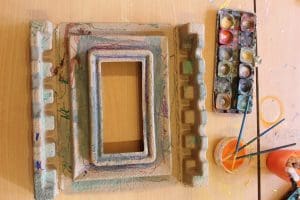
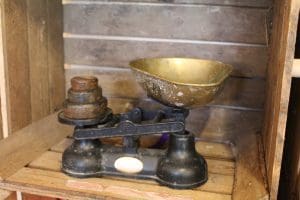
This is just another valuable learning opportunity for the children to gain the skills to reuse things, rather than adding to the waste on Earth. We get a lot of our equipment from SCRAP (scrap creative reuse Arts Project Ltd) as we have spoken about in our ‘make something out of nothing’ blog. We also rely on the practitioners collecting and then our wonderful families donating things that they think we can reuse. Car boot sales and charity shops are a great find for getting things to reuse.
 Next time you want to throw something away, perhaps think again, it might just be our children's next project waiting to happen.
Next time you want to throw something away, perhaps think again, it might just be our children's next project waiting to happen.
-Kayleigh

